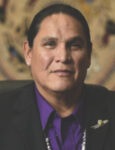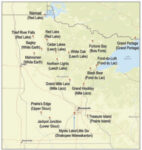
It’s no mistake that the cover of the 2009 issue of Tribal Government Gaming includes some of the most legendary leaders in the recorded history of Indian Country. History is important for Native Americans because it demonstrates that they have survived through the most difficult times, racist overseers and inhumanities visited upon few other people in the world.
The editors of TGG believe that the importance of tribal leaders will only increase as tribal gaming moves into its third decade. The original tribal gaming leaders are almost as legendary as those who faced down the insurmountable odds of a U.S. government gone wild with expansion late in the 19th and early in the 20th centuries. Richard Hayward and Ralph Sturgis in Connecticut; Chief Philip Martin in Mississippi; Richard Milanovich and Anthony Pico in California; Marge Anderson in Minnesota; the Billie clan in Florida; Ron Allen in Washington… I must stop here because I could fill this entire column just by listing some of the names that blazed the trail for tribal gaming (with apologies to any I neglected to name).
For it is leadership that will cement the respectability of Indian gaming across the country. While gaming has undoubtedly been good for Indian Country, there is so much more to do. And the emergence of new leaders is crucial to its continued development.
The five leaders we decided to profile in this issue are, as a group, extraordinary. But as individuals, they have that humility and passion to serve their tribes, their communities, their families and their nation that goes above and beyond the normal call of duty. If Indian Country had only these five leaders, I would be confident it would do fine. But because these five leaders are just a sample of the talent, commitment and dedication that is demonstrated by up-and-coming leaders of almost every tribe, I have no fears whatsoever that Indian gaming will be in good hands for generations to come.
As an example of what the “first generation” of leaders created for Indian Country, don’t miss the study conducted by Katherine Spilde Contreras, the chair of the Sycuan Institute on Tribal Gaming at San Diego State University, and Jonathan B. Taylor, the president of Taylor Policy Group. The executive summary of their findings, on page 24, is fascinating and uplifting.
But there are still hurdles to overcome, especially in light of the economy. Matt Sodl and Steve Rittvo of the Innovation Group explain how the economy has hit the tribal gaming industry, especially when it comes to financing. For any tribe that has plans for expansion or even new properties, this is a must-read.
Last January’s Supreme Court decision, Carcieri v. Salazar, has clearly put a damper on expansion for Indian gaming. Former BIA official Carl Artman explains some of the ramifications, while Jake Coin of the San Manuel Band of Mission Indians calls for congressional action to right the Supreme Court wrong.
It seems every issue of TGG, Judith Shapiro is begging me for more time because the Class II regulations are so fluid and changing right up to deadline. Even this year, when the National Indian Gaming Commission has abandoned its efforts to draw that “bright line” between Class II and Class III machines, Shapiro found uncomfortable legal implications on all sides.
Another annual feature on tribal regulation is again an important read, as author David Ross talks to some of the most powerful regulators in Indian Country on the need for diligence and steadfastness, especially at the tribal level, the first bulwark for regulators.
Ernie Stevens, the chairman of the National Indian Gaming Association, recounts the organization’s efforts in Washington, D.C. While the Obama administration seems to be “Indian-friendly,” he advises all to be attentive to the myriad of issues that are front-and-center at the federal level.
So in this, our seventh edition of Tribal Government Gaming, I would like to thank our writers-clearly the best in the business-who bring to you the most cutting-edge and informative pieces in any Indian gaming publication. We could not have put together such a quality magazine without their help.


















